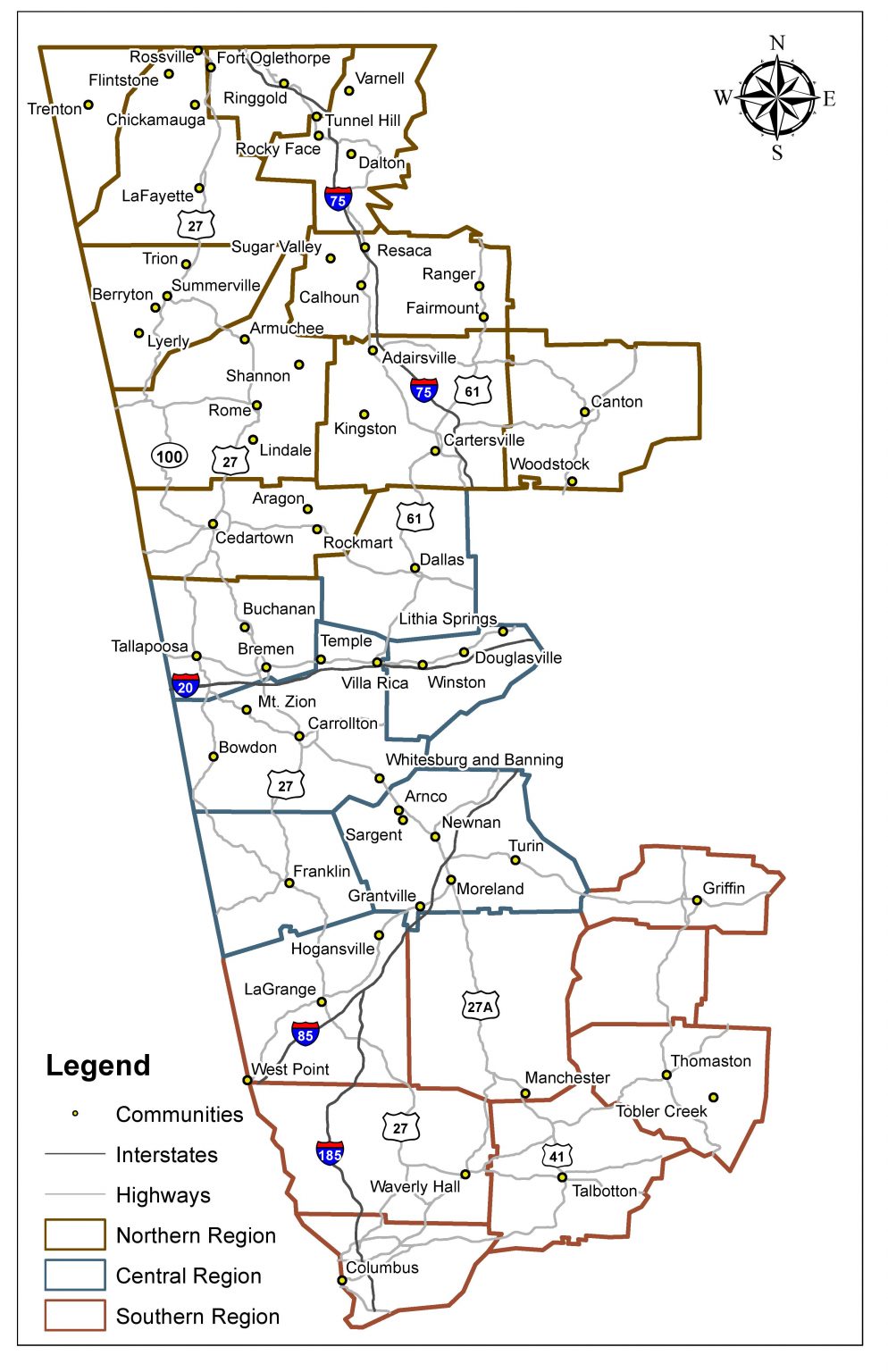Come see an old mining town that struck gold in the textile industry due to its easy access to the nearby river and railroad.
An early gold mining town in Haralson County, Tallapoosa’s easy access to the Tallapoosa River and Georgia Pacific Railway made it an ideal place for cotton manufacturing. Due to the low cost of shipping and building in the city and the presence of a ready workforce Tallapoosa became the site of a series of industrial enterprises. The first successful cotton manufacturing company, Tallapossa Mills, brought new commerce and jobs to the city.
The Jackson brothers, owners of Tallapoosa Mills, sold their majority stock holdings in the company to the William Whitman Company, after World War I, but the organization remained mostly unchanged. At the beginning of the Great Depression, C. E. Pearce continued to serve as manager of the cotton mill, and A. V. Howe, one of the original organizers and officers, served as president. After operating part-time during the Depression, the mill closed in 1939 due to economic decline.
The northeastern-based American Thread Company (ATCO) purchased Tallapoosa Mills in 1943 to make combed cotton yarn and reopening the mill on January 28, 1944. World War II ended in 1945 and ATCO expanded the Tallapoosa plant in February 1947. The three-story extension of 110,000 square feet was built next to the original building, adding 25,000 spindles.Manufacturing volume increased by 140 percent as did the number of employees, rising from 315 to 680. In 1959, ATCO expanded operations once again.
To help promote ATCO brand yarn in the 1940s and 50s, the ATCO franchise published a series of knitting and crocheting pattern books, called “Star Books.” ATCO’s Tallapoosa mill closed in the early 1980s, the last textile manufacturer to close in the city. Venus Threads purchased the mill and reopened it in the early 1990s, and continue to operate it today.
Visit
Things to Do
- West Georgia Museum, 185 Mann Street: This museum has exhibits on the Tallapoosa area’s history, as well as its natural history.
Places to See
The following properties are not open to the public, but you can view them from the exterior to learn more about the buildings that supported the textile industry here.
- Mandeville Mills Cotton Gin, 76 East Alabama Street: The Mandeville Mills of Carrollton had a number of side businesses including a cottonseed oil mill and a fertilizer factory. To supply the cotton for their textile operation and the seeds for their oil mill, they set up a network of gins in the surrounding countryside, even up into Haralson County. Their Tallapoosa gin still stands, it was repurposed into an antique mall and local business which have since closed.
- Tallapoosa Cotton Mills/Atco Mill, 191 West Atlanta Street: This 100-year-old facility is still standing and remains in operation as Venus Threads. This building is an excellent example of both the early- and mid-20th century industrial architecture. The southern facing wall (opposite the water tower and smokestack) is the original facade. It features rows of windows that have been bricked over. The northern facing wall is the expansion added by ATCO and features a more sleek design with no windows, reflecting the fact that the building was air-conditioned. ATCO operated the facility until the late 1980s. It was purchased by Venus Threads, who still run it today.
- Tallapoosa Knitting Mill/Kimball Knitting Co., 2276 US-78: This location has since been demolished and unrelated buildings constructed in its place, but you can still see the surrounding area. This small-scale operation was only active in the 1890s and early 1900s.
History
Explore this community’s history via the drop-down sections below!
Charter Trail Members
- Tallapoosa Historical Society
- Tallapoosa Museum
- Tallapoosa Public Library
- Greater Haralson Chamber of Commerce
- Greater Haralson Tourism
- Haralson County Historical Society
Resources to Explore
Click on the following links to learn more about this region.
- Facts for Kids
- Digital Library of Georgia
- Georgia Archives Virtual Vault
- Georgia Historical Society
- Haralson County, New Georgia Encyclopedia
Back to Community List
Email the Trail at wgtht@westga.edu or visit our Contact Us page for more information.







